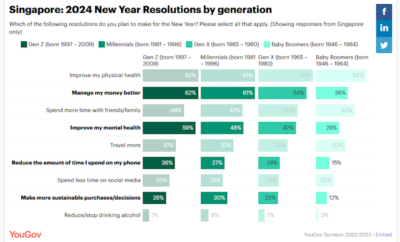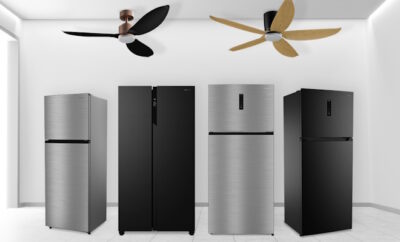
Insights + interviews
In Conversation With Audiologist Dr Lauraine Wells
Dr Lauraine Wells, a Senior Acoustics Regulatory Affairs Specialist from 3M Personal Safety Division recently sat down with us to answer a few questions about hearing loss, we’re all ears!
AA: What are the warning signs that one could be suffering from a hearing impairment?
LW: The difficulty with noise-induced hearing loss is that unless it is a sudden hearing change due to an extremely loud event – like a gunshot or explosion – it is typically a slowly developing condition and without obvious symptoms. Often the first awareness of a problem is hearing ringing in the ears – or tinnitus. A person might describe hearing a high pitched tone in one ear after noise exposure and possibly describe feeling that his or her hearing is muffled or distorted. It is likely to have a temporary change in hearing that recovers after rest, however with repeated exposures, the temporary hearing shifts can become permanent. Eventually, the hearing loss will become significant enough that a person will have difficulty understanding speech, particularly when there is a lot of background noise – like at a restaurant.
AA: What are the thresholds that our ears can take before it becomes detrimental to health?
LW: It is difficult to provide an exact metric because everyone is different and people have different susceptibility to damage. The occupational regulatory limits of noise exposure usually start at 85 dBA averaged over an eight hour work day. The louder the sound, the shorter amount of time one can be exposed to it. We know that the risk of developing noise-induced hearing loss increases with increased noise exposure and employers are typically required to enforce use of hearing protection if the noise exposure cannot be controlled or engineered down to lower levels. Also, there are other negative effects of being in noise that may affect health: noise exposure is associated with increased risk of cardiovascular disease, occupational injuries, sleep disturbance, and learning. Noise can disrupt communication and create safety hazards. A general rule to follow: when noise is so loud that a person must raise his/her voice in order to communicate with someone about a metre away, then it is likely hazardous (about 85 dBA or more).
AA: What are the work-related industries/occupations that are most prone to hearing impairment?
LW: In the United States – the manufacturing sector, mining, construction, military and agriculture. This should be largely similar for Asia.
AA: What are the more common lifestyle habits that could cause hearing impairment?
LW: According to the National Institute of Occupational Safety and Health (NIOSH), in the U.S., hearing loss is the third most common chronic health condition among older adults, following hypertension and arthritis. More than 11% of workers in the US have difficulty hearing and it is stated that about 24% of the hearing difficulty is due to occupational exposures. Hearing loss is associated with many poor health conditions, including diabetes and high blood pressure. Life style choices that may increase the risk of hearing loss include: smoking, noise exposure from work or other activities – such as shooting firearms, operating noise equipment/tools, motor vehicles, music, etc. Like above, while these stats are from the U.S., it should also be applicable for Asia.
AA: There’s this perception that most of us would face hearing problems as we age. How true is that?
LW: Population studies clearly show that hearing loss is more common in older populations than in younger populations. However, there are several potential contributors to hearing loss, some of which are due to environmental conditions – such as noise exposure – and others are related to health conditions. There are people who enjoy good hearing well into the later decades of life, so all of those things our mothers and physicians tell us – “eat right and exercise” – to maintain good health – are good for hearing as well.
AA: Can hearing impairment be treated medically, or is there any form of aid or means that can help to enhance hearing capabilities?
LW: Depending on the cause of the hearing loss, there may be medical and/or surgical treatments available, also most hearing-impaired people can benefit from using hearing aids or other sound amplifying devices. Noise-induced hearing loss is sometimes treatable – if it is a sudden onset, such as from an explosion. There is a lot of research being conducted on pharmacological treatments for noise-induced hearing loss, however at this point in time, nothing has been approved for use in the U.S. Nevertheless, always see a physician or audiologist if hearing loss is suspected, to learn what options are available and if medical treatment is needed.
A: What is your advice on hearing protection for us, on how to better take care of our hearing in terms of the right protective gear for the different occasions?
LW: Know the risk – identifying when noise is hazardous is the first step. Take action – either reduce the noise, move away from the noise, or use some type of hearing protection that allows being in the noisy environment while protecting hearing. Regarding hearing protection – there are so many good options available for all types of noise exposures – whether it’s used during shooting or hunting, or whether it’s used for limiting the annoying sounds we don’t want to hear – like snoring or dogs barking – it’s almost possible to always find a good solution. Regarding protection, it’s important to select a hearing protector that is easy to use, fits well, and is comfortable enough to use for long periods of time. Also, it’s important to find an option that allows someone to hear the important communication or warning signals while still being protected. My advice is – try many different types until a favourite is identified. Always keep hearing protection around – just like sunglasses – so it’s easy to find and simple to use when there are unwanted noises.
For more information, please refer to these links:
• http://blogs.cdc.gov/niosh-science-blog/2009/11/24/hearing/
• http://www.caohc.org/updatearticles/fall2012/first-results.php
• http://www.cdc.gov/nchs/data/hestat/hearing00-06/hearing00-06.htm
• http://www.cdc.gov/nchs/data/databriefs/db214.htm









